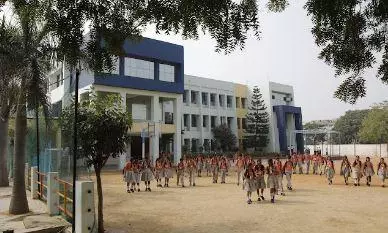Copyright The Austin Chronicle

Eric Ramos, a history teacher at Martin Middle School, was shopping at H-E-B recently when a kid from a neighborhood family asked Ramos if he’d still be a teacher at Martin when they made it to sixth grade. Martin MS, where Ramos has taught for the last 11 years and where he coaches football, basketball, and track, is one of the 13 schools currently slated for closure next year with Austin ISD’s districtwide consolidation plan. “And this was the first time I couldn’t say yes to that. And that was a tough moment. I mean, it’s a lot to process,” Ramos said. At the end of the school year, hundreds of AISD teachers, principals, teaching assistants, custodians, office staff, cafeteria workers, librarians, counselors, and more will no longer have a job at their current school. The district has assured that they can find everyone a new job at a different campus, laying out the process: Once the consolidations are finalized Nov. 20, a preliminary preference survey will be sent out to every single district employee, both salaried and hourly workers, allowing them to indicate which school they’d like to work at next year. Preference will be given to those affected by the closures. If the uprooted employees aren’t offered a position at their elected schools, they can attend a series of “match” fairs in the spring. “But it also kind of sucks, because it’s like, if we’re not already overworked enough, now we have to throw on that we’re essentially job hunting next semester,” Ramos said. Beyond the school closures, the Texas Education Agency requires that only “highly qualified teachers” can teach at the nearly two dozen AISD schools to undergo the turnaround process (TAP) next year for receiving failing scores under the STAAR-based accountability system – a vague standard that no one yet knows the definition of but will likely take into account years of teaching and demonstrated “student growth” metrics determined by the TEA. When a school closes, TEA accountability follows the students wherever they go: Martin’s TAP will be taken on by Kealing MS. So, many like Ramos would like to move alongside their current students to their new school, but have no idea if they will arbitrarily qualify to be able to do so. At a protest outside of the TEA headquarters earlier this month, Heather Wong, a former STEM instructional coach at Dobie MS, remembered getting the call from the district informing her that she didn’t “qualify” to stay at Dobie through its turnaround, a community she felt deeply tied to. “Educators who have stayed for years, earning students’ trust, knowing families by name, designing meaningful lessons were suddenly deemed ineligible. Why? Because their impact and their work were reduced to test scores,” Wong pressed. The district’s official communications through the draft plan did not guarantee job security for the hundreds of AISD employees it directly impacts. “At this point, no one has been guaranteed a job,” AISD Trustee Kathryn Whitley Chu told the Chronicle. The promise of another position within the district has been essentially verbal: “I’m going to great lengths to keep all of our staff. It doesn’t have to be that way, but I believe our staff are part of the solution,” Superintendent Matias Segura said at a community feedback meeting on Oct. 22. But when there are simply fewer schools, and the district claims to be saving millions of dollars in staffing and custodial services through the closures, many have logically worried that they won’t have positions for everyone. “This seems like a layoff without actually calling it a layoff,” Traci Dunlap, a teacher at Maplewood ES, slated to close, told trustees during the Oct. 9 board meeting. Nonetheless, the district maintains confidence that, with employees leaving the district and no outside hires until April, the numbers fall together. “There will be fewer campus positions, overall, with the proposed closures,” the district told the Chronicle. “However … in combination with natural attrition and an external hiring freeze, there is plenty of room to help everyone find a new position.” Education Austin, the AISD employee workers union, released a response on Oct. 15 urging the district to guarantee job security for every affected employee. “School closures and consolidations effectively constitute a reduction in force,” the union wrote. “We insist that no employee face layoffs, salary cuts, or involuntary reclassification as a result of these plans.” And unlike with student reassignments that should remain in a 3-mile radius, AISD employees could get reassigned to a job across town, or at a campus that doesn’t make sense given where their child attends school – many employees are also AISD parents, and are thus doubly affected by this process. “I do think there will be open positions,” Whitley Chu told the Chronicle. “But I don’t know if that open position will be possible for people.” This article appears in October 31 • 2025.



